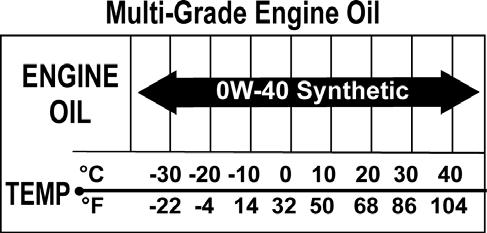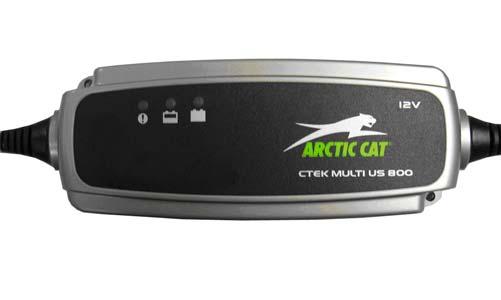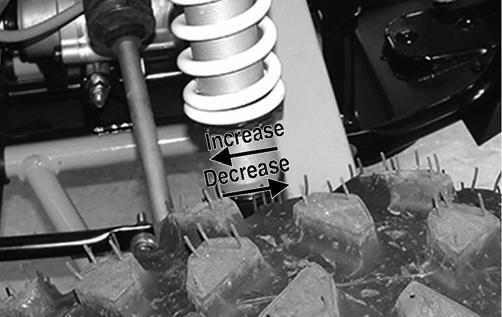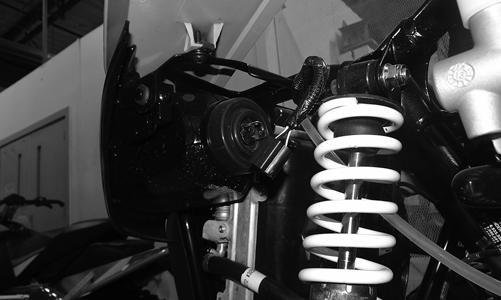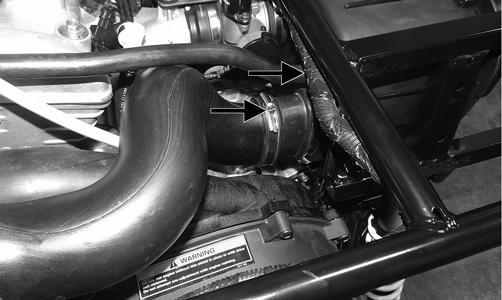
16 minute read
Periodic Maintenance/Tune-Up
Tighten all nuts, bolts, and cap screws. Care must be taken that all calibrated nuts, bolts, and cap screws are tightened to specifications. It is advisable to lubricate certain components periodically to ensure free movement. Apply light oil to the components using the following list as reference. A.Accelerator Pedal Pivot/Cable Ends
B.Brake Pedal Pivot
C.Shift Cable
SPECIAL TOOLS A number of special tools must be available to the technician when performing service procedures in this section. Refer to the current Special Tools Catalog for the appropriate tool description. NOTE: When indicated for use, each special tool
will be identified by its specific name, as shown in the chart below, and capitalized.
NOTE: Special tools are available from the Arctic
Cat Service Department.
Description p/n
Compression Tester Kit 0444-213 Oil Filter Wrench 0644-389 Timing Light 0644-296
Air Filter
CLEANING AND INSPECTING FILTER CAUTION
Failure to inspect the air filter frequently if the vehicle is used in dusty, wet, or muddy conditions can damage the engine.
1.Unsnap the five fasteners securing the air filter housing cover and remove the cover.
WT006A
2.Remove the air filter knob; then remove the air filter.
Account for the round air filter support. Remove the outer filter from the inner filter.
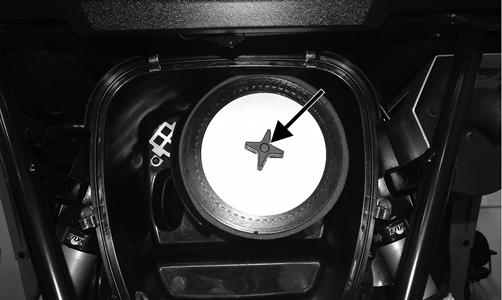
WT176A
NOTE: Do not attempt to remove the inner foam
from the wire mesh. It is part of the filter frame.
3.Place each element in a pan larger than the element and spray both sides generously with cleaning solvent; then let sit approximately three minutes. NOTE: Foam Filter Cleaner and Foam Filter Oil
are available from Arctic Cat.
4.In a pan larger than each element, with mild detergent (dish soap) and water, wash all the dirt and oil off by squeezing or matting each element, not twisting it (wringing out or twisting the filter can cause damage). 5.Rinse off any remaining soap. 6.Remove any excess water from the elements by matting with a towel. 7.Allow the elements to dry completely. 8.Spray oil generously onto each air filter and work the oil into the elements.
9.Squeeze each element to remove excess oil. 10.Attach the foam filter to the inner filter screen.
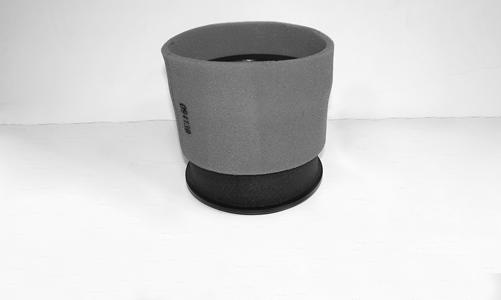
WT179
CAUTION
A torn air filter can cause damage to the vehicle engine. Dirt and dust may get inside the engine if the element is torn. Carefully examine the element for tears before and after cleaning it. Replace the element with a new one if it is torn.
11.Clean any dirt or debris from inside the air cleaner.
Be sure no dirt enters the throttle body. 12.Place the foam filter onto the filter frame; then install the air filter on the filter rod. Install the air filter support; then the filter knob. Tighten securely. 13.Install the air filter housing cover and secure with the retaining clips.
CHECKING AND CLEANING DRAINS 1.Inspect the drain beneath the main housing for debris or liquid. Remove and clean the drain bulb if contaminated.
2.Wipe any accumulation of oil or gas from the filter housing and drain.
Testing Engine Compression
NOTE: The engine should be warm (operating tem-
perature) and the battery fully charged for an accurate compression test.
NOTE: The access panel must be removed for this
procedure.
WT021
1.Remove the spark plug wires from the spark plugs. 2.Using compressed air, blow any debris from around the spark plugs.
3.Remove the spark plugs; then attach the spark plug wires to the plugs and ground the plugs on the cylinder heads well away from the spark plug holes. 4.Attach the Compression Tester Kit. 5.While holding the throttle in the full-open position, crank the engine over with the electric starter until the gauge stops climbing (five to 10 compression strokes). Compression should be as shown in the chart. 6.If compression is abnormally low, verify the following: A.Starter cranks engine over (normal speed). B.Gauge is functioning properly. C.Throttle in the full-open position. D.Valve/tappet clearance correct. E.Engine warmed up. 7.If compression is still low, service the top end (see
Engine – Servicing Top-Side Components).
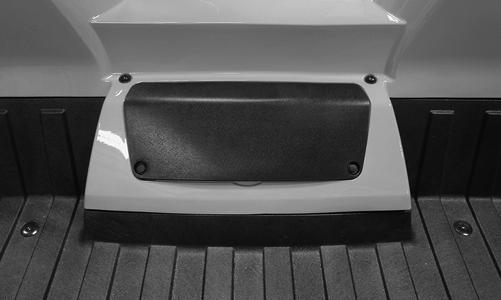
! WARNING
Always wear safety glasses when using compressed air.
PSI (WOT)
Cylinder #1/Cylinder #2 185
Spark Plugs
A light brown insulator indicates the plug and fuel/air ratio are correct. A white or dark insulator indicates that the engine may need to be serviced. To maintain a hot, strong spark, keep the plug free of carbon. Adjust the gap to 0.6-0.8 mm (0.023-0.031 in.).
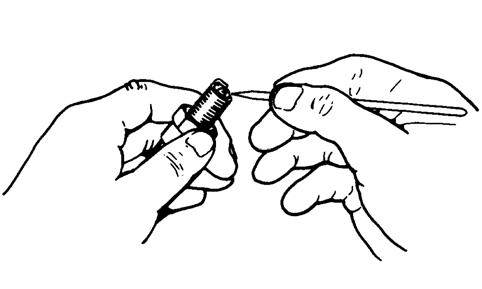
ATV-0051
CAUTION
Before removing a spark plug, be sure to clean the area around the spark plug. Dirt could enter engine when removing or installing the spark plug.
ATV-0052
A new spark plug should be tightened 1/2 turn once the washer contacts the cylinder head. A used spark plug should be tightened 1/8-1/4 turn once the washer contacts the cylinder head.
Muffler/Spark Arrester
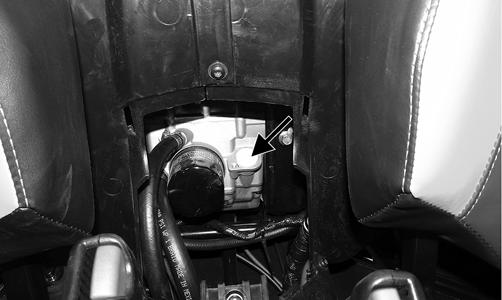
Clean the spark arrester using the following procedure.
1.Remove the spark arrester screen; then using a suitable brush, clean the carbon deposits from the screen taking care not to damage the screen.
! WARNING
Wait until the muffler cools to avoid burns.
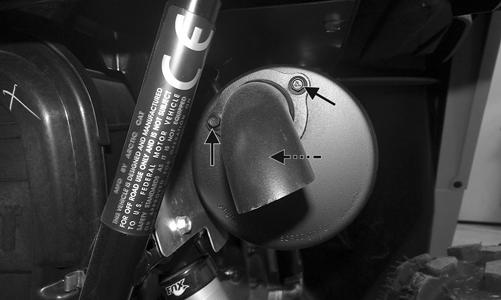
WT035A
3.Remove the drain plug from the bottom of the engine and drain the oil into a drain pan.
! WARNING
Use extreme caution when removing the oil drain plug. Hot oil can cause severe injury and skin burns.
WT005A
NOTE: If the screen or gasket is damaged in any
way, it must be replaced.
2.Install the spark arrester assembly and gasket and secure with the cap screws. Tighten the cap screws to 72 in.-lb.
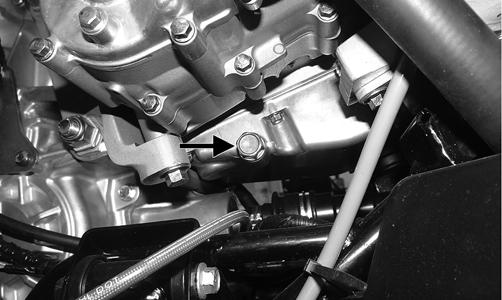
Engine Oil - Filter
OIL - FILTER Change the engine oil and oil filter at the scheduled intervals. The engine should always be warm when the oil is changed so the oil will drain easily and completely. 1.Park the vehicle on level ground; then remove the access panel.
WT037A
2.Remove the oil level stick/filler plug.
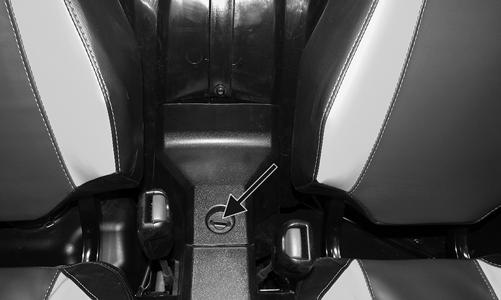
WT294A
4.Using the Oil Filter Wrench and a ratchet handle (or a socket or box-end wrench), remove the old oil filter.
NOTE: Clean up any excess oil after removing the
filter.
5.Apply oil to a new filter O-ring and check to make sure it is positioned correctly; then install the new oil filter. Tighten securely. 6.Install the engine drain plug and tighten to 20 ft-lb.
Pour the specified amount of the recommended oil in the filler hole. Install the oil level stick/filler plug. 7.Start the engine (while the vehicle is outside on level ground) and allow it to idle for a few minutes. 8.Turn the engine off and wait approximately one minute.
9.Unscrew the oil level stick and wipe it with a clean cloth.
10.Install the oil level stick and thread into the engine case.
NOTE: The oil level stick should be threaded into
the case for checking the oil level.
11.Remove the oil level stick; the oil level must be within the operating range but not exceeding the upper mark.
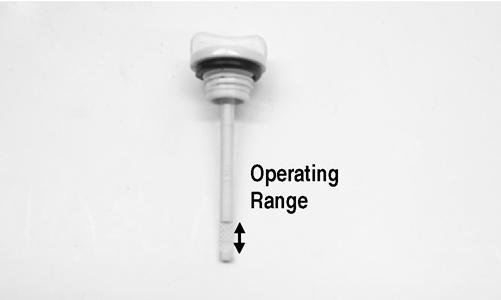
WT066A
CAUTION
Do not over-fill the engine with oil. Always make sure that the oil level is not above the upper mark.
12.Inspect the area around the drain plug and oil filter for leaks.
Front Differential - Transaxle Lubricant
To check front differential lubricant, use the following procedure. 1.Remove the level plug; lubricant should be level with the bottom threads.
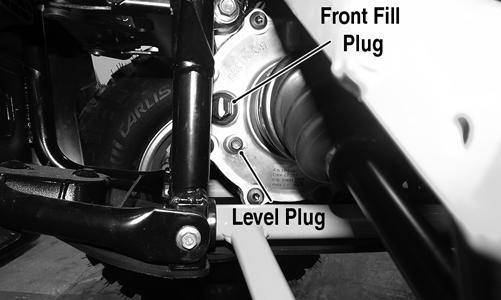
WT041A
2.If low, remove the fill plug and add lubricant until it appears at the level plug threads. Tighten the fill plug to 16 ft-lb and the level plug to 45 in.-lb. To check transaxle lubricant, use the following procedure.
1. Remove the fill/level plug; the lubricant level should be level with the bottom of the plug threads.
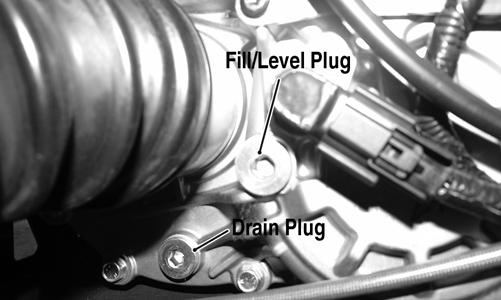
WT025A
2.If low, add Arctic Cat Transaxle Fluid as necessary.
Tighten the fill/level plug to 16 ft-lb. To change the lubricant, use the following procedure. 1.Place the vehicle on level ground. 2.Remove each drain and fill plug. 3.Drain the lubricant into a drain pan. 4.After all the lubricant has been drained, install the drain plug and tighten to 18 ft-lb. 5.Pour the appropriate amount of recommended lubricant into the fill hole.
6.Install the fill plug and tighten to 16 ft-lb. NOTE: If the lubricant is contaminated with water,
inspect the drain plug, fill plug, and/or bladder.
Headlight - Taillight-Brakelight
HEADLIGHT BULB REPLACEMENT 1.Remove the wiring harness connector from the back of the headlight. 2.Remove the rubber seal; then release the retaining clip. Remove the bulb. 3.Install the new bulb; then attach the retaining clip and press on the rubber boot. 4.Connect the wiring harness. 5.Adjust the headlight using the Checking/Adjusting
Headlight Aim instructions in this sub-section.
REMOVING HEADLIGHT ASSEMBLY 1.Remove the grille. NOTE: Removing the front fender will aid in
replacing the headlight assembly.
2. Remove the headlight adjustment cap screw.
WT065A
3.Remove the inner cap screw securing the rear of the headlight assembly.
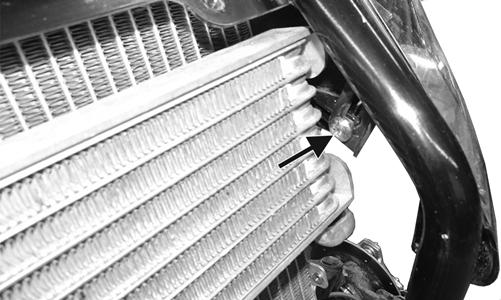
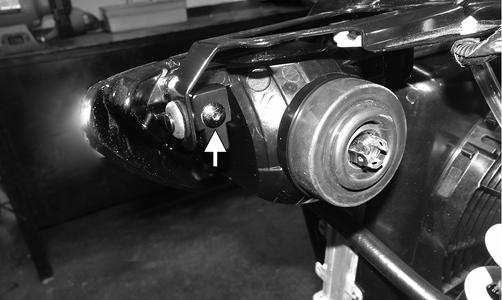
WT272
4.Push the headlight assembly inward towards the radiator and lift slightly on the exterior bracket until the mounting stud is free; then remove the headlight assembly. 5.Remove the rubber seal at the rear of the headlight assembly.
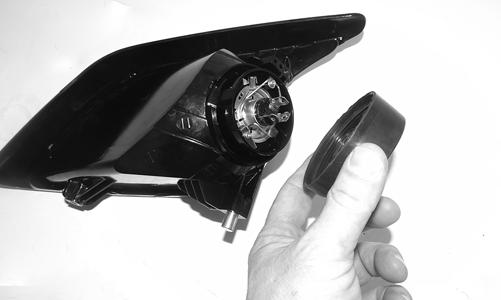
WT263
6.Release the spring clip securing the headlight bulb; then remove the bulb.
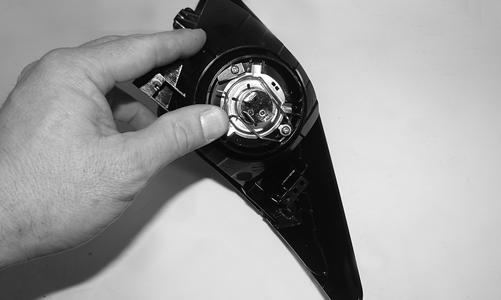
WT264
INSTALLING HEADLIGHT ASSEMBLY 1.Install the headlight bulb making sure each tab is positioned correctly and that it cannot rotate clockwise. Secure the bulb with the spring.
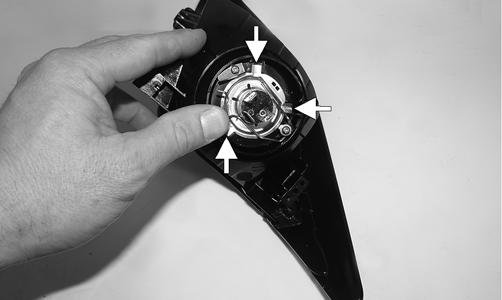
WT264A
2.Install the rubber seal so that it is fully seated.
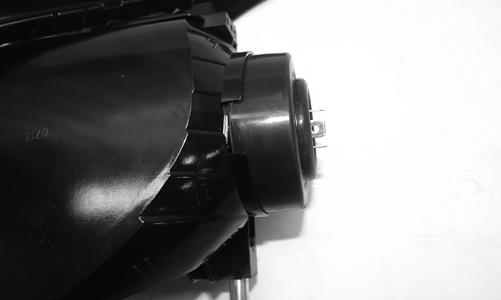
WT262
3.Starting with the interior mounting stud, install the headlight assembly into position.
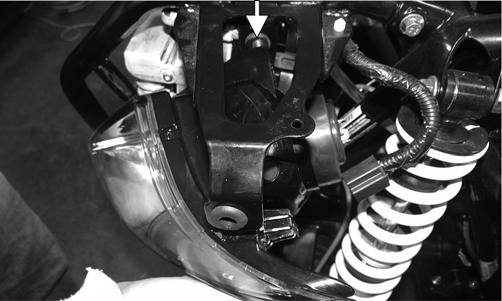
WT269A
NOTE: Applying lubricant to the studs will aid in
assembly.
4.With the interior stud in place in the grommet, work the exterior stud into position. NOTE: It may be necessary to lightly pull on the
exterior bracket to insert the exterior mounting stud.
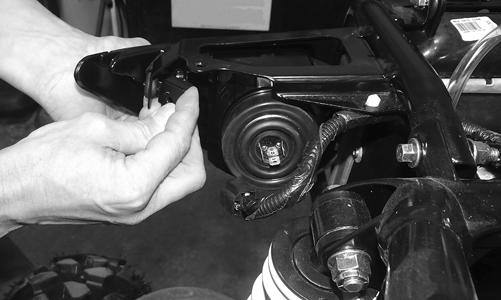
WT270
5.Secure the headlight with the existing screws. 6.Connect the wiring harness and install the front fender; then install the grille. 7.Check and adjust headlight aim (see Periodic Maintenance/Tune-Up section).
REMOVING TAILLIGHT/BRAKELIGHT NOTE: The LED taillights are not replaceable. The
entire assembly must be replaced as a component.
1.Remove the fasteners securing the facia to the storage box.
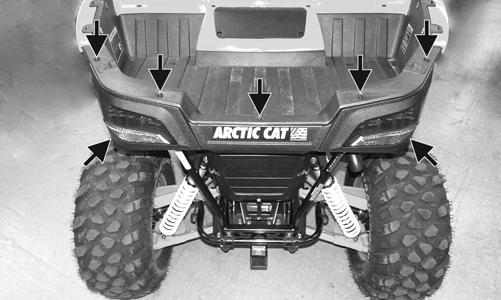
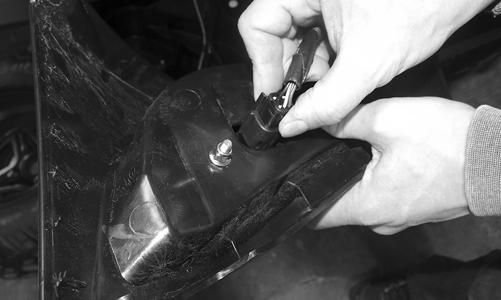
WT222
3. Remove the lock nuts securing the taillight to the facia.
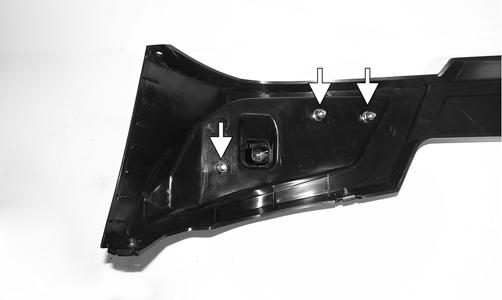
WT259A
INSTALLING TAILLIGHT/BRAKELIGHT 1.Install the new taillight into the facia using new lock nuts. Tighten to 36 in.-lb.
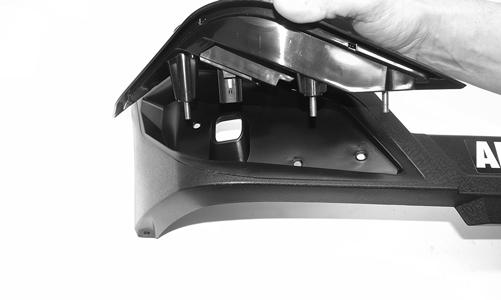
WT260
2.Connect the wiring harness and secure the facia using the existing fasteners. Tighten securely.
CHECKING/ADJUSTING HEADLIGHT AIM The headlights can be adjusted vertically. The geometric center of the HIGH beam light zone is to be used for vertical aiming. 1.Position the vehicle on a level floor so the headlights are approximately 6.1 m (20 ft) from an aiming surface (wall or similar aiming surface).
0748-285
NOTE: There should be an average operating load
on the vehicle when adjusting the headlight aim.
2.Measure the distance from the floor to the mid-point of each headlight. 3.Using the measurements obtained in step 2, make horizontal marks on the aiming surface. 4.Switch on the lights. Make sure the HIGH beam is on. DO NOT USE LOW BEAM.
5.Observe each headlight beam aim. Proper aim is when the most intense beam is 5 cm (2 in.) below the horizontal mark on the aiming surface. 6.Remove the front grille; then loosen the cap screw and move the headlight assembly up or down as required. Tighten to 60 in.-lb.

WT065A
7.Install the front grille. Tighten to 60 in.-lb.
Hydraulic Brake System
CHECKING/BLEEDING The hydraulic brake system has been filled and bled at the factory. 1.With the vehicle in a level position and the tires properly inflated, check the fluid level in the reservoir. If the level in the reservoir is not above the
MIN, add DOT 4 brake fluid.
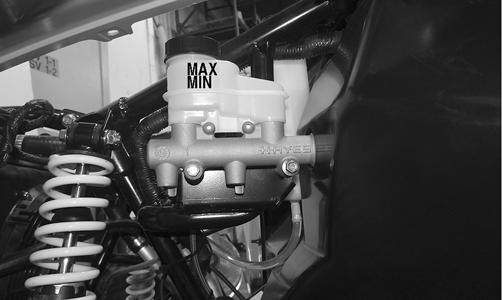
WT012A
2.Depress the brake pedal several times to check for a firm brake. If the brake is not firm, the system must be bled.
3.To bleed the brake system, use the following procedure:
A.Remove the cover and fill the reservoir with DOT 4 brake fluid.
B.Install and secure the cover; then slowly press the brake pedal several times. C.Install one end of a clear hose onto the bleed screw farthest from the cylinder (right rear) and direct the other end into a container; then while holding slight pressure on the brake pedal, open the bleed screw and watch for air bubbles. Close the bleed screw before releasing the brake pedal. Repeat this procedure until no air bubbles are present.
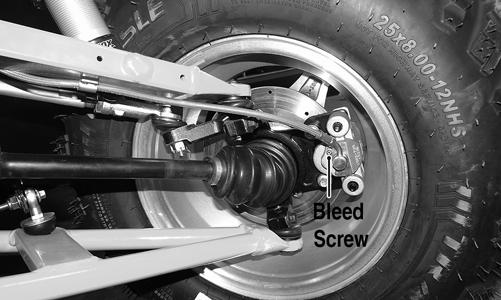
WT045A
NOTE: During the bleeding procedure, watch the
reservoir very closely to make sure there is always a sufficient amount of brake fluid. If the fluid level gets low in the reservoir, refill the reservoir before the bleeding procedure is continued.
D.Repeat step C until the brake pedal is firm. E.At this point, perform step B, C, and D on the left rear bleed screw; then move to the right front bleed screw and follow the same procedure. Finish with the left front bleed screw.
4.Carefully check the entire hydraulic brake system that all hose connections are tight, the bleed screws are tight, the protective caps are installed, and no leakage is present.
CAUTION
This hydraulic brake system is designed to use DOT 4 brake fluid only. If brake fluid must be added, care must be taken as brake fluid is very corrosive to painted surfaces.
INSPECTING HOSES Carefully inspect the hydraulic brake hoses for cracks or other damage. If found, the brake hoses must be replaced.
CHECKING/REPLACING PADS The clearance between the brake pads and brake discs is adjusted automatically as the brake pads wear. The only maintenance that is required is replacement of the brake pads when they show excessive wear. Check the thickness of each of the brake pads as follows. 1.Remove a front wheel.
2.Measure the thickness of each brake pad.
WT220
3.If thickness of either brake pad is less than 1.0 mm (0.039 in.), the brake pads must be replaced. NOTE: The brake pads should be replaced as a set. 4.To replace the brake pads, use the following procedure.
A.Remove the cap screws securing the caliper holder to the knuckle; then remove the pads from the caliper.
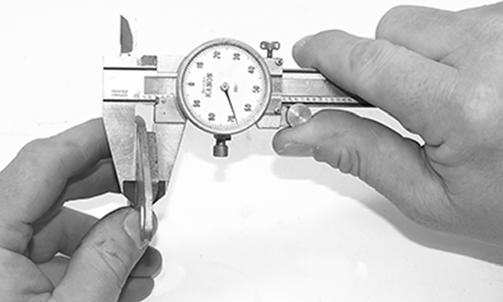
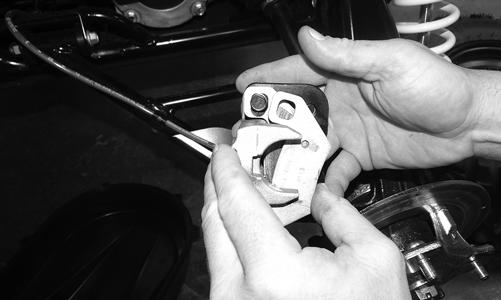
WT221
B.Install the new brake pads.
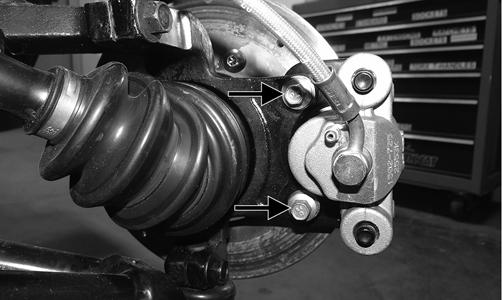
WT287A
5.Install the wheels and tighten the wheel nuts in 20 ft-lb increments to a final torque of 40 ft-lb (steel wheel), 60 ft-lb (aluminum wheel w/black nuts), or 80 ft-lb (aluminum wheel w/chrome nuts). 6.Burnish the brake pads (see Burnishing Brake Pads in this section).
BRAKE DISC Using a micrometer, measure the thickness of the brake disc in the contact surface. If thickness is 0.125-in. or less, the disc must be replaced. To replace the brake disc, see Drive and Brake Systems – Hub.
Burnishing Brake Pads
Brake pads must be burnished to achieve full braking effectiveness. Braking distance will be extended until brake pads are properly burnished.
1.Choose an area large enough to safely accelerate the vehicle to 30 mph and to brake to a stop. 2.Accelerate to 30 mph; then release the accelerator pedal and depress the brake pedal to decelerate to 0-5 mph. 3.Repeat procedure 20 times until brake pads are burnished. ! WARNING
Failure to properly burnish the brake pads could lead to premature brake pad wear or brake loss. Brake loss can result in severe injury or death.
Replacing V-Belt
NOTE: If a clutch or any clutch component has
been replaced or the technician is unsure of shim quantity/placement, clutch offset must be verified (see Engine - Servicing Left-Side Components).
NOTE: Drive belts require a break-in period (see
Drive Belt Break-In Procedure in the General Information/Foreword Section).
CAUTION
Failure to properly break-in a new drive belt will result in premature belt failure.
REMOVING 1.Raise the rear of the vehicle just enough to unload the rear suspension (weight off the shock absorbers). 2.Remove the left rear tire.
3.Remove the cap screws securing the outer clutch cover; then remove the outer clutch cover.
WT182A
4.Remove the cap screw securing the driven clutch to the output shaft. Account for the washer.
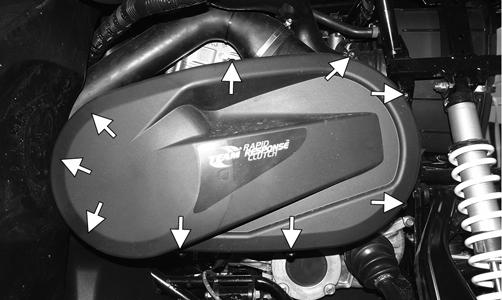
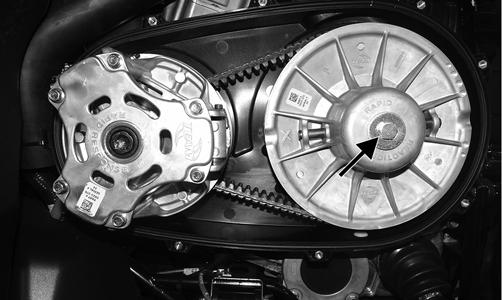
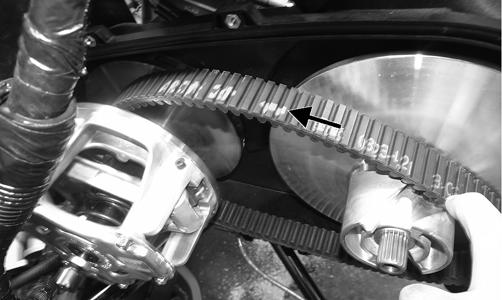
WT183A
5.Remove the stationary sheave and V-belt and any belt threads or debris in the clutch housing or sheaves.
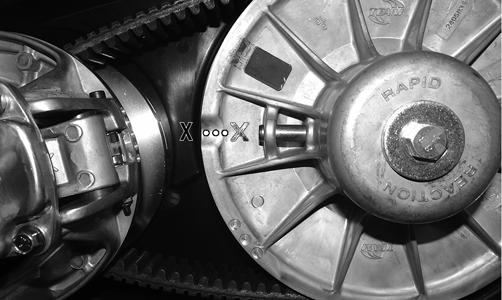
NOTE: If removing the stationary sheave, account
for the alignment shims in the moveable sheave (see Servicing Left-Side Components in the Engine section for proper shimming).
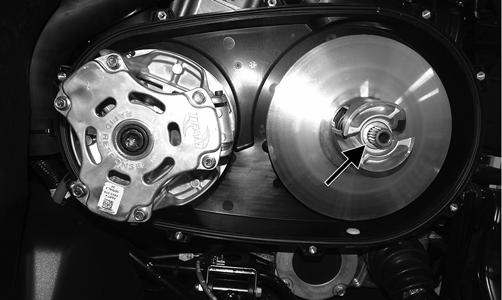
WT186A
CHECKING Use the Drive Belt Gauge to identify any abnormal wear. Measure across the top of the V-belt (in multiple locations) using a Vernier caliper. Do not squeeze the belt as doing so may produce an inaccurate measurement. The V-belt must be at least 33.0 mm at any point.
INSTALLING 1.Making sure the directional arrows on the belt are aligned with engine rotation, place the drive belt on the drive clutch; then making sure the “X” marks are aligned, install the alignment shims (if applicable) and stationary sheave on the driven clutch.
WT517A
WT200A
2. Using an appropriate strap or oil filter wrench (3 5/8”) to hold the driven clutch and ensuring the splines of the sheave and input shaft are engaged, secure the clutch with the cap screw and washer. Tighten to 35 ft-lb.

WT202
3.Install the outer clutch cover and secure with the cap screws. Tighten to 5 ft-lb.
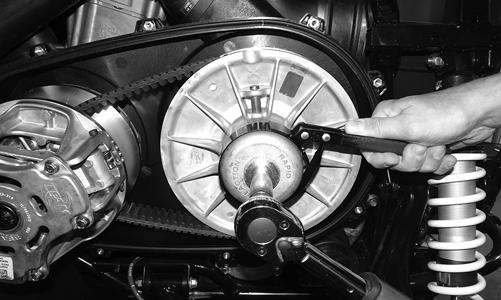
WT182A
4.Install the left rear wheel. Tighten the wheel nuts in 20 ft-lb increments to a final torque of 40 ft-lb (steel wheel), 60 ft-lb (aluminum wheel w/black nuts), or 80 ft-lb (aluminum wheel w/chrome nuts).

